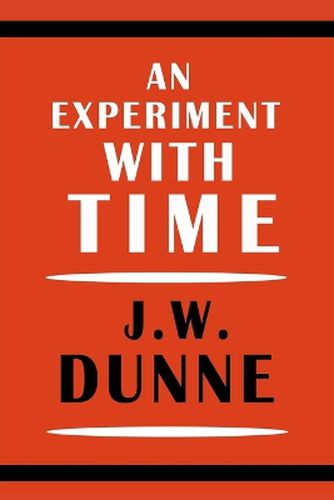Readings Newsletter
Become a Readings Member to make your shopping experience even easier.
Sign in or sign up for free!
You’re not far away from qualifying for FREE standard shipping within Australia
You’ve qualified for FREE standard shipping within Australia
The cart is loading…






2019 Reprint of 1927 Edition. Full facsimile of the original edition, not reproduced with Optical Recognition software. Dunne, a British soldier, aeronautical engineer and philosopher describes in this work his experiment with precognitive dreams and builds on them a theory of time which he later called Serialism. First published in March 1927, the book was widely read and influenced the imaginative literature of the day. An Experiment with Time divides into two main topics. The first half of the book describes a number of precognitive dreams, most of which Dunne himself had experienced. His key conclusion was that such precognitive visions foresee future personal experiences by the dreamer and not more general events. The second half develops a theory to try and explain the dreams. Dunne's starting point is the observation that the moment of "now" is not described by science. Contemporary science described physical time as a fourth dimension and Dunne's argument led to an endless sequence of higher dimensions of time to measure our passage through the dimension below. Accompanying each level was a higher level of consciousness. At the end of the chain was a supreme ultimate observer.
According to Dunne, our wakeful attention prevents us from seeing beyond the present moment, whilst when dreaming that attention fades and we gain the ability to recall more of our timeline. This allows fragments of our future to appear in pre-cognitive dreams, mixed in with fragments or memories of our past. Other consequences include the phenomenon known as deja-vu and the existence of life after death.
Dunne's ideas strongly influenced the J. R. R. Tolkien and C. S. Lewis. Both writers were members of the Inklings literary circle, and Tolkien also used Dunne's ideas about parallel time dimensions in the Lord of the Rings. Other important contemporary writers who used his ideas included John Buchan, James Hilton, his old friend H. G. Wells, Graham Greene and Rumer Godden.
$9.00 standard shipping within Australia
FREE standard shipping within Australia for orders over $100.00
Express & International shipping calculated at checkout
2019 Reprint of 1927 Edition. Full facsimile of the original edition, not reproduced with Optical Recognition software. Dunne, a British soldier, aeronautical engineer and philosopher describes in this work his experiment with precognitive dreams and builds on them a theory of time which he later called Serialism. First published in March 1927, the book was widely read and influenced the imaginative literature of the day. An Experiment with Time divides into two main topics. The first half of the book describes a number of precognitive dreams, most of which Dunne himself had experienced. His key conclusion was that such precognitive visions foresee future personal experiences by the dreamer and not more general events. The second half develops a theory to try and explain the dreams. Dunne's starting point is the observation that the moment of "now" is not described by science. Contemporary science described physical time as a fourth dimension and Dunne's argument led to an endless sequence of higher dimensions of time to measure our passage through the dimension below. Accompanying each level was a higher level of consciousness. At the end of the chain was a supreme ultimate observer.
According to Dunne, our wakeful attention prevents us from seeing beyond the present moment, whilst when dreaming that attention fades and we gain the ability to recall more of our timeline. This allows fragments of our future to appear in pre-cognitive dreams, mixed in with fragments or memories of our past. Other consequences include the phenomenon known as deja-vu and the existence of life after death.
Dunne's ideas strongly influenced the J. R. R. Tolkien and C. S. Lewis. Both writers were members of the Inklings literary circle, and Tolkien also used Dunne's ideas about parallel time dimensions in the Lord of the Rings. Other important contemporary writers who used his ideas included John Buchan, James Hilton, his old friend H. G. Wells, Graham Greene and Rumer Godden.